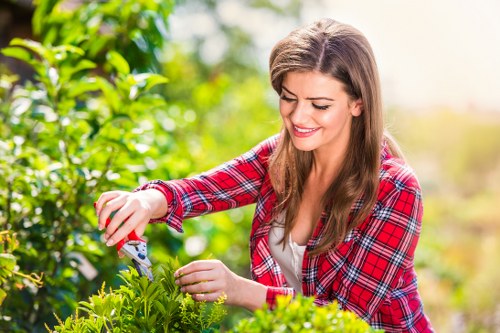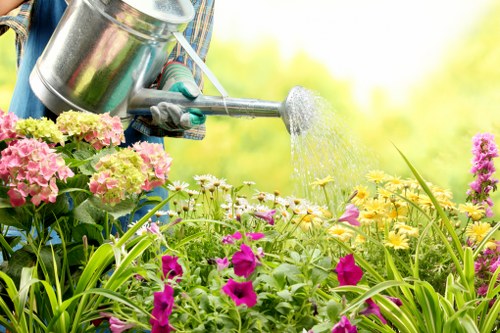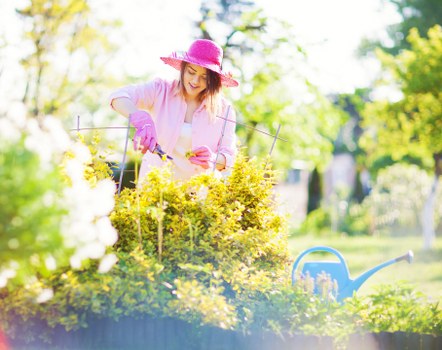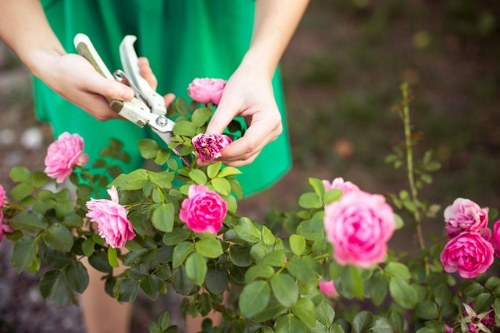Landscaping in Victoria: Transforming Outdoor Spaces

Victoria, renowned for its diverse climates and picturesque landscapes, offers a unique canvas for landscaping enthusiasts and homeowners alike. Whether you're in the bustling city of Melbourne or the serene countryside, landscaping in Victoria can enhance the beauty, functionality, and value of your property.
Understanding the local climate is crucial for successful landscaping. Victoria experiences a temperate climate with distinct seasons, including hot summers, cool winters, and moderate rainfall. This variability influences plant selection, garden design, and maintenance practices.
One of the first steps in landscaping is assessing your space. Consider factors such as sunlight exposure, soil quality, and existing vegetation. A well-planned landscape not only complements your home's architecture but also provides a sustainable and enjoyable outdoor environment.

Choosing the Right Plants for Victorian Gardens
Selecting plants that thrive in Victoria's climate is essential for a low-maintenance and vibrant garden. Native plants are an excellent choice as they are adapted to the local conditions and support the ecosystem.
Popular Native Plants:
- Lavender – Known for its fragrant blooms and drought resistance.
- Aeonium – Adds architectural interest with its rosette-forming leaves.
- Grevillea – Attracts birds and provides colorful flowers.
- Wattle – Australia's national floral emblem, offering bright yellow blooms.
Incorporating a mix of evergreen and deciduous plants ensures year-round interest and structure. Additionally, consider the maintenance requirements and growth habits to create a balanced and sustainable garden.

Designing Functional Outdoor Spaces
Landscaping is not just about aesthetics; it's also about creating functional spaces that suit your lifestyle. Whether you desire a tranquil retreat, an entertaining area, or a productive vegetable garden, thoughtful design can bring your vision to life.
Key Design Elements:
- Patios and Decks: Ideal for outdoor dining and relaxation.
- Paths and Walkways: Guide visitors through your garden while adding visual interest.
- Water Features: Incorporate ponds, fountains, or waterfalls for a calming ambiance.
- Lighting: Enhance safety and highlight key features during the evening.
Integrating these elements seamlessly with plantings and structures creates a cohesive and inviting outdoor environment.

Sustainable Landscaping Practices
Embracing sustainable landscaping not only benefits the environment but also reduces long-term maintenance costs. Practices such as rainwater harvesting, composting, and using recycled materials contribute to a greener garden.
Eco-Friendly Tips:
- Mulching: Retains soil moisture and suppresses weeds.
- Drip Irrigation: Conserves water by delivering it directly to plant roots.
- Native Planting: Reduces the need for excessive watering and fertilizers.
- Solar Lighting: Provides illumination without increasing energy consumption.
Implementing these strategies leads to a resilient and thriving landscape that stands the test of time.

Hiring Professional Landscaping Services in Victoria
While DIY landscaping can be rewarding, hiring professional services ensures expertise and efficiency. Professional landscapers in Victoria understand the local conditions and can offer customized solutions to meet your needs.
Benefits of Professional Services:
- Expertise: Knowledge of plant species, design principles, and sustainable practices.
- Time-Saving: Professionals handle the planning, sourcing, and execution efficiently.
- Quality Results: High standards of workmanship ensure a polished and durable landscape.
- Ongoing Maintenance: Services often include regular upkeep to keep your garden thriving.
Investing in professional landscaping can transform your outdoor space into a stunning and functional extension of your home.
Maintaining Your Victorian Landscape
Proper maintenance is key to preserving the beauty and health of your landscaped garden. Regular tasks such as pruning, weeding, and watering ensure that your plants remain vibrant and free from disease.
Seasonal Care Tips
Different seasons require specific care routines to address the changing needs of your garden:
- Spring: Focus on planting new annuals, fertilizing, and preparing beds for growth.
- Summer: Ensure adequate watering, control pests, and manage weed growth.
- Autumn: Clean up fallen leaves, prune perennials, and prepare plants for winter.
- Winter: Protect sensitive plants from frost and plan for next year's landscape.
Tools and Equipment
Investing in quality gardening tools can make maintenance tasks easier and more efficient. Essential tools include:
- Pruning Shears: For trimming and shaping plants.
- Garden Fork: Useful for turning soil and aerating beds.
- Watering Can or Hose: Ensure consistent watering practices.
- Weeder: Helps in removing stubborn weeds without damaging surrounding plants.
Regular upkeep not only enhances the appearance of your landscape but also promotes the longevity and health of your plants.
Trends in Victorian Landscaping
Staying updated with the latest trends can inspire your landscaping projects and keep your garden fresh and modern. Current trends in Victoria include:
- Minimalist Gardens: Emphasizing clean lines, simple plantings, and uncluttered spaces.
- Edible Landscapes: Combining aesthetics with functionality by integrating vegetable gardens and herb beds.
- Outdoor Living Spaces: Creating areas for dining, lounging, and entertaining outdoors.
- Native Plant Gardens: Showcasing Australia's indigenous flora for a sustainable and authentic look.
Incorporating these trends can elevate your garden's appeal and functionality, making it a true reflection of your personal style.
Conclusion
Landscaping in Victoria offers endless possibilities to enhance your outdoor living spaces. By understanding the local climate, selecting appropriate plants, and implementing thoughtful design and maintenance practices, you can create a beautiful and sustainable garden that stands the test of time.
Ready to transform your outdoor space? Contact us today to book your landscaping service and bring your vision to life!

